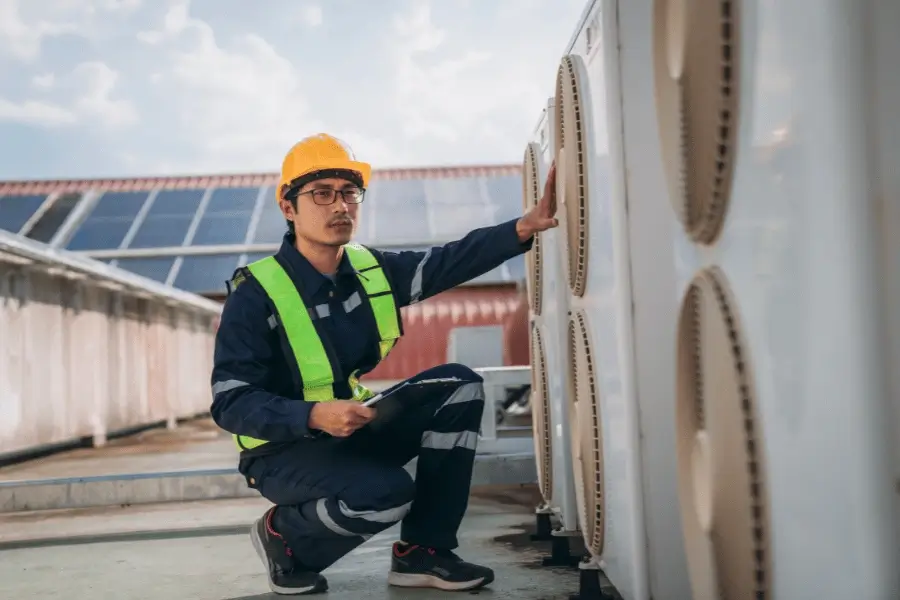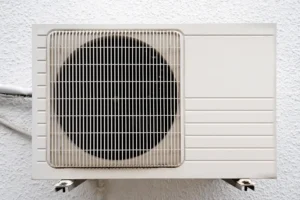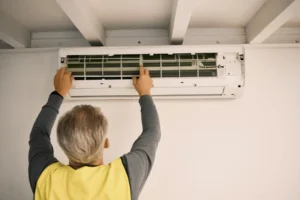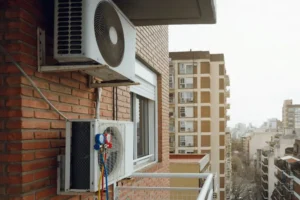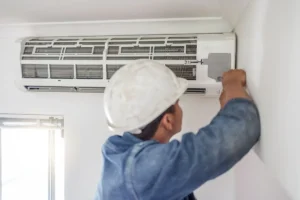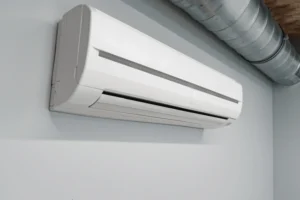Introduction: Why Seasons Matter in Ottawa
Ottawa is known for its dramatic seasonal contrasts, which create very different conditions for homeowners considering a ductless heat pump installation. Winters are long and frigid, with average lows between –10 °C and –20 °C, and polar vortex events sometimes bringing the temperature down to –30 °C. This prolonged cold not only tests the endurance of heating equipment but also complicates installation logistics for contractors.
By contrast, summers in Ottawa can reach +30 °C or higher, with humidex values making it feel closer to +40 °C. This puts significant stress on cooling systems and increases demand for installations during heat waves. The city also experiences shoulder seasons, spring and fall, where milder weather provides the most favorable conditions for both contractors and homeowners.
These seasonal shifts influence not only how ductless heat pumps operate throughout the year but also how and when installation should be scheduled. A system installed at the wrong time may cost more, face installation challenges, or miss rebate opportunities. On the other hand, planning around seasonal conditions can help homeowners minimize costs, secure rebates, and ensure the long-term reliability of their investment.
Understanding the seasonal impact on ductless heat pump installation in Ottawa is therefore critical for making an informed decision.
Winter: Cold Weather Installation Challenges & Costs
Ottawa winters are harsh, and this season presents the most challenging environment for both installers and homeowners. While ductless heat pumps are designed for cold-climate performance, the installation process itself can be complicated by snow, ice, and frigid air.
- Labor Risks: Installers must work in sub-zero temperatures, often shoveling snow to reach outdoor sites or clearing ice to mount equipment. Frozen ground makes it harder to secure outdoor slabs or brackets, leading to extended labor hours. Contractors may also face safety risks such as frostbite or equipment malfunctions.
- Cost Increases: Homeowners may face 10–20% higher costs due to seasonal demand and difficult working conditions. For example, an installation that costs CA$7,500 in spring could cost closer to CA$9,000 in January. This is because contractors need more labor time, and emergency winter demand often drives prices upward.
- System Performance During Setup: Newly installed units may require additional testing to confirm cold-climate performance. Sub-zero conditions can trigger defrost cycles immediately, which means installers must spend extra time fine-tuning the system.
- Emergency Installs: A common scenario in Ottawa is a furnace failure during peak winter. In such cases, many homeowners turn to ductless heat pumps as emergency solutions. Because of urgency, both equipment and labor come at a premium, further raising total installation costs.
While winter installs are possible, most HVAC contractors in Ottawa recommend avoiding them unless absolutely necessary. The combination of difficult working conditions, higher costs, and scheduling delays makes it the least desirable season.
Spring: The Sweet Spot for Installs
Spring is often considered the best season for ductless heat pump installation in Ottawa. Once the snow melts and the ground softens, conditions become significantly more favorable.
- Mild Temperatures: Installers can work comfortably without battling frostbite or extreme heat. This ensures smoother installation and reduces labor time.
- Lower Demand: With heating season ending and cooling season not yet peaking, HVAC companies have greater availability. Many contractors offer seasonal promotions to keep their schedules full, which translates to better pricing for homeowners.
- Rebate Access: Programs such as the Canada Greener Homes Grant and Enbridge Home Efficiency Rebate Plus (HER+) often restart early in the year. By installing in spring, homeowners can secure funding before rebate quotas are exhausted.
- Efficiency Testing: Mild weather allows technicians to test both heating and cooling functions, ensuring that the system performs well across all modes before Ottawa’s extreme weather arrives.
For homeowners who can plan ahead, spring offers the best combination of cost-effectiveness, availability, and system readiness.
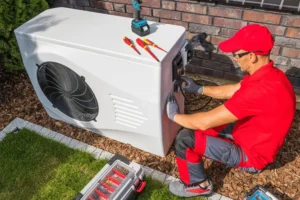
Summer: A Mixed Bag of Pros & Cons
Summer installations also come with advantages, but there are important trade-offs to consider.
- Ease of Access: With no snow or frozen soil, outdoor unit placement, refrigerant line runs, and wall penetrations are more straightforward. Contractors can complete jobs quickly in favorable conditions.
- Contractor Demand Spike: Hot, humid Ottawa summers drive high demand for cooling systems. Installers may prioritize AC replacements or emergency cooling jobs, meaning ductless projects could face scheduling delays.
- Balanced Pricing: Installation costs in summer tend to stabilize between CA$6,000–CA$10,000, depending on complexity and zoning. However, rush requests during July and August heat waves can lead to premium pricing.
- Cooling Emphasis: Many installations are done in response to urgent cooling needs. As a result, technicians may focus heavily on cooling setup while overlooking winter heating optimization. Homeowners should request a full dual-mode setup to ensure year-round efficiency.
Summer can be a good time for installation if booked early. However, waiting until a heat wave may result in higher costs and longer wait times.
Fall: A Strategic Installation Window
Fall is the second-best time, after spring, to install a ductless heat pump in Ottawa.
- Ideal Conditions: Cooler, dry weather makes installations efficient and predictable. Installers can complete work without rushing against extreme heat or cold.
- Rebate Alignment: Many rebate programs remain open into the fall, allowing homeowners to access funding before deadlines close. This is especially valuable for those who missed the spring window.
- Pre-Winter Readiness: By installing in October or November, homeowners ensure their system is fully operational before Ottawa’s freezing temperatures arrive.
- Competitive Pricing: Contractors often offer discounts in fall to fill their schedules before winter, making it a cost-friendly choice.
Fall strikes the right balance, convenient, cost-effective, and strategically timed for heating season readiness.
Seasonal Cost Comparison
| Season | Average Cost (CA$) | Availability | Key Notes |
| Winter | 7,500 – 15,000 | Low | Higher labor difficulty, emergency premiums |
| Spring | 5,000 – 10,000 | High | Best availability, fresh rebates |
| Summer | 6,000 – 11,000 | Medium | High demand, ensure heating setup |
| Fall | 5,500 – 10,500 | High | Competitive rates, pre-winter readiness |
This table shows how seasonal timing directly affects both cost and convenience for Ottawa homeowners.
Seasonal Performance of Heat Pumps
It’s not just installation costs, system performance also fluctuates with Ottawa’s seasonal climate:
- Winter Efficiency: Cold-climate ductless heat pumps can operate down to –30 °C, but efficiency drops as outdoor temperatures plummet. Energy consumption spikes during defrost cycles, common in Ottawa winters.
- Spring/Fall Balance: Mild temperatures allow heat pumps to operate at their peak efficiency, often exceeding 300% efficiency (COP 3.0). These seasons are the most cost-effective for operation.
- Summer Cooling: Ductless heat pumps perform as well as, or better than, high-end central air conditioners. They not only cool effectively but also dehumidify Ottawa’s muggy summer air, improving comfort.
Energy Efficiency and Environmental Impact
The season of installation can also influence long-term energy savings and environmental outcomes.
- Seasonal Commissioning: Installing in spring or fall allows technicians to calibrate both heating and cooling functions, ensuring efficiency throughout the year.
- Carbon Footprint: Switching from fossil-fuel heating to ductless heat pumps can reduce household greenhouse gas emissions by up to 40%. Installing before heavy winter reliance maximizes this benefit.
- Rebate Alignment with Green Goals: Many rebates are specifically designed to promote decarbonization. Homeowners who install in spring or fall often benefit most by aligning cost savings with sustainability incentives.
Homeowner & Installer Insights
- A local Ottawa homeowner on Reddit reported paying CA$9,000 for installation, but rebates reduced their net cost to around CA$6,500.
- Contractors consistently emphasize that seasonal scheduling avoids costly emergency calls and ensures proper testing of both heating and cooling modes.
- Many installers report booking 3–6 weeks in advance during peak summer and winter, reinforcing the value of spring and fall planning.
Practical Tips for Ottawa Homeowners
- Book Early in Spring or Fall to secure the best pricing and rebates.
- Monitor Seasonal Rebates since funding often runs out mid-year.
- Ask for Cold-Climate Certified Models, essential for Ottawa winters.
- Avoid Emergency Winter Installs unless absolutely necessary.
- Balance Zones Properly during commissioning in mild seasons for maximum year-round comfort.
Final Thoughts
In Ottawa, where winters are long and summers bring cooling demand, the timing of ductless heat pump installation has a direct impact on cost, performance, and overall convenience.
- Winter: Expensive and difficult, best reserved for emergencies.
- Spring: The best season overall, offering lower prices, ideal conditions, and fresh rebate funding.
- Summer: Feasible, but high demand can increase costs and limit availability.
- Fall: A strong alternative, balancing cost savings and pre-winter readiness.
By planning installations in spring or fall, choosing cold-climate certified systems, and leveraging available rebates, Ottawa homeowners can reduce upfront costs, maximize energy efficiency, and ensure reliable comfort year-round.
